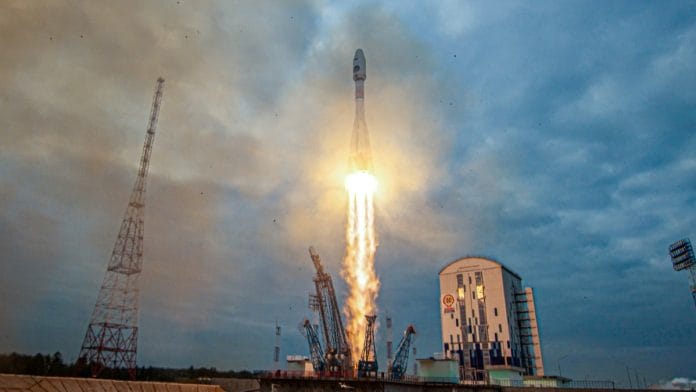New Delhi: On a day the Indian Space Research Organisation (ISRO) put out a statement it had successfully reduced the orbit of the Chandrayaan-3 mission’s Lander Module (LM), further bringing it nearer to the moon, the Russian space agency Roscosmos announced Sunday the tragic failure of its own ambitious lunar mission, the Luna-25.
The spacecraft reportedly spun out of control before ultimately crashing on to the surface of the moon.
“In accordance with the flight program of the automatic station ‘Luna-25’, on August 19, it was planned to issue an impulse to form its pre-landing elliptical orbit. At about 14.57 Moscow time, communication with the automatic station was interrupted. The measures taken on August 119 and 20 to search for ‘Luna-25’ and get in touch with it did not produce any result,” said a purported Roscosmos statement shared on social media.
Earlier, on Saturday, it was reported that Luna-25 spacecraft detected an “emergency” during a manoeuvre ahead of its landing on Moon.
Luna-25 is reportedly Russia’s first such mission to the moon in 47 years. This Wednesday, the lander was successfully placed in the Moon’s orbit after being launched from the Vostochny cosmodrome in the country’s Far East.
The mission was set to stay on the Moon for about a year, where it was expected to collect samples and analyse soil. The cameras on the spacecraft had already captured images of Earth and moon.
Luna-25 was set to land on the moon’s south pole ahead of the Indian spacecraft, Chandrayaan-3, on 21 August. Chandrayaan-3, is scheduled to land on 23 August.
One of the reasons the South Pole is significant is because scientists from NASA and also other space agencies have detected frozen water in the south pole craters.
According to media reports, Roscosmos chief Yuri Borisov conveyed to Russian President Vladimir Putin this June the inherent risks associated with lunar missions. These missions carry an estimated success rate of around 70 percent, underlining the complex and challenging nature of lunar exploration.
(Edited by Smriti Sinha)
Also read: ‘Thanks for the ride,’ Chandrayaan-3’s Vikram lander successfully separates from spacecraft






